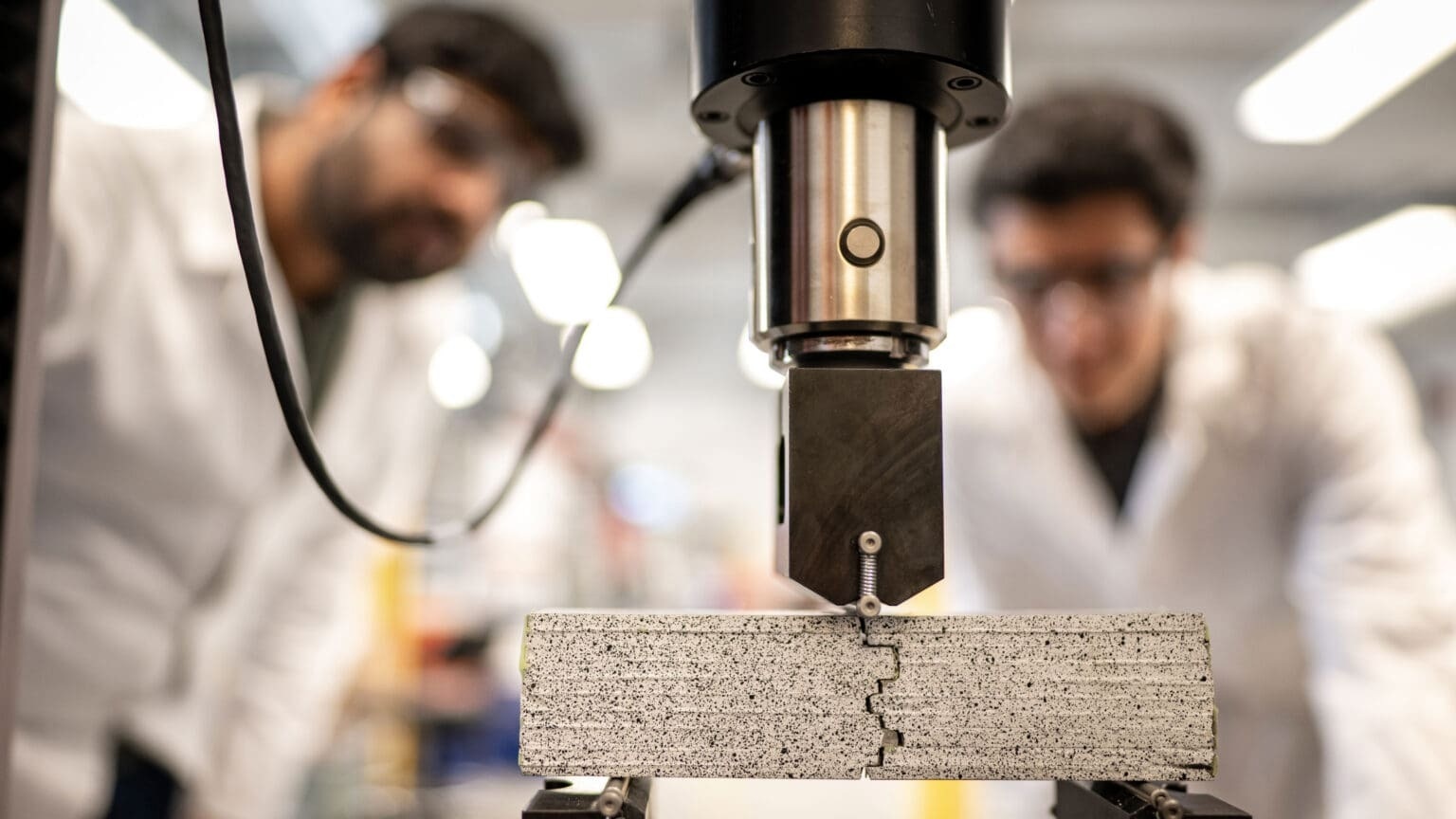Princeton engineers have created a new cement composite that is 17 times more crack-resistant and 19 times more flexible than standard cement. This innovation was inspired by the natural substances found in oyster and abalone shells. The findings, published in the journal Advanced Functional Materials, suggest that this development could enhance the durability of various brittle ceramic materials, ranging from porcelain to concrete, by making them less susceptible to cracking.
 Inspired by nature, researchers at Princeton have created material that surpasses cement in crack resistance and ductility. Image Credit: Sameer A. Khan/Fotobuddy
Inspired by nature, researchers at Princeton have created material that surpasses cement in crack resistance and ductility. Image Credit: Sameer A. Khan/Fotobuddy
If we can engineer concrete to resist crack propagation, we can make it tougher, safer and more durable.
Shashank Gupta, Graduate Student, Department of Civil and Environmental Engineering, Princeton University
In a recent study led by Reza Moini, an assistant professor of civil and environmental engineering, a novel cement composite mimicking the structure of nacre, or mother of pearl, was developed. Published on June 10th, 2024, the research highlights that alternating layers of cement paste and thin polymers significantly enhance the material's crack resistance and ductility.
Nacre, primarily made up of hexagonal aragonite tablets bonded by soft biopolymers, inspires this design. These aragonite tablets boost the strength, while the biopolymers provide flexibility and resilience. Under stress, the aragonite tablets slide, a movement that, along with fracture deflection and biopolymer deformation, helps disperse energy. This allows the material to endure high mechanical stresses while maintaining its structural integrity, thereby offering both robustness and resilience.
This synergy between the hard and soft components is crucial to nacre’s remarkable mechanical properties.
Shashank Gupta, Graduate Student, Department of Civil and Environmental Engineering, Princeton University
The research team at Princeton, inspired by the structure of nacre, crafted innovative composites by merging traditional Portland cement paste with a small amount of polyvinyl siloxane, a highly stretchable polymer. They constructed small multi-layered beams by alternating sheets of cement paste with this polymer, which were then subjected to a notched three-point bending test to assess their crack resistance and fracture toughness.
The study involved three different beam designs:
- Regular Alternating Layers: These beams alternated between cement paste sheets and thin polymer layers.
- Grooved Layers: For this type, lasers etched hexagonal grooves into the cement paste sheets, which were then layered with the polymer.
- Fully Separated Hexagonal Tablets: This design mimicked nacre most closely, with fully cut-through cement paste forming individual hexagonal tablets, held together and separated by polymer layers.
The experimental comparison included these three designs against a reference beam made of solid, monolithic cement paste. The reference beam exhibited typical brittle failure, breaking abruptly and completely upon reaching its failure threshold. In contrast, both the regular and grooved layered beams demonstrated enhanced ductility and resistance to cracking.
Most notably, the beams designed with fully separated hexagonal tablets showed the best performance. While maintaining strength comparable to the solid cement paste beam, these beams exhibited 19 times the ductility and 17 times the fracture toughness, significantly outperforming the standard model in resilience and flexibility.
Our bio-inspired approach is not to simply mimic nature’s microstructure but to learn from the underlying principles and use that to inform the engineering of human-made materials. One of the key mechanisms that make a nacreous shell tough is the sliding of the tablet at the nanometer level. Here, we focus on the mechanism of tablet sliding by engineering the built-in tabulated structure of cement paste in balance with the properties of the polymer and the interface between them. In other words, we intentionally engineer defects in the brittle materials as a way to make them stronger by design.
Reza Moini, Assistant Professor, Department of Civil and Environmental Engineering, Princeton University
The researchers cautioned that the findings are based on laboratory circumstances and that developing the approaches for field application will need additional work and study. They are investigating if the structures’ fracture toughness and ductility apply to other ceramic materials besides cement paste, such as concrete.
Moini added, “We are only scratching the surface; there will be numerous design possibilities to explore and engineer the constitutive hard and soft material properties, the interfaces, and the geometric aspects that play into the fundamental size effects in construction materials.”
Hadi S. Esmaeeli, a Princeton associate research researcher, co-authored the study. The study was partially financed by the National Science Foundation’s CAREER Award #2238992 under the Engineering for Civil Infrastructure program.
Journal Reference:
Gupta, S., et. al. (2024) Tough and Ductile Architected Nacre-Like Cementitious Composites. Advanced Functional Materials. doi:10.1002/adfm.202313516